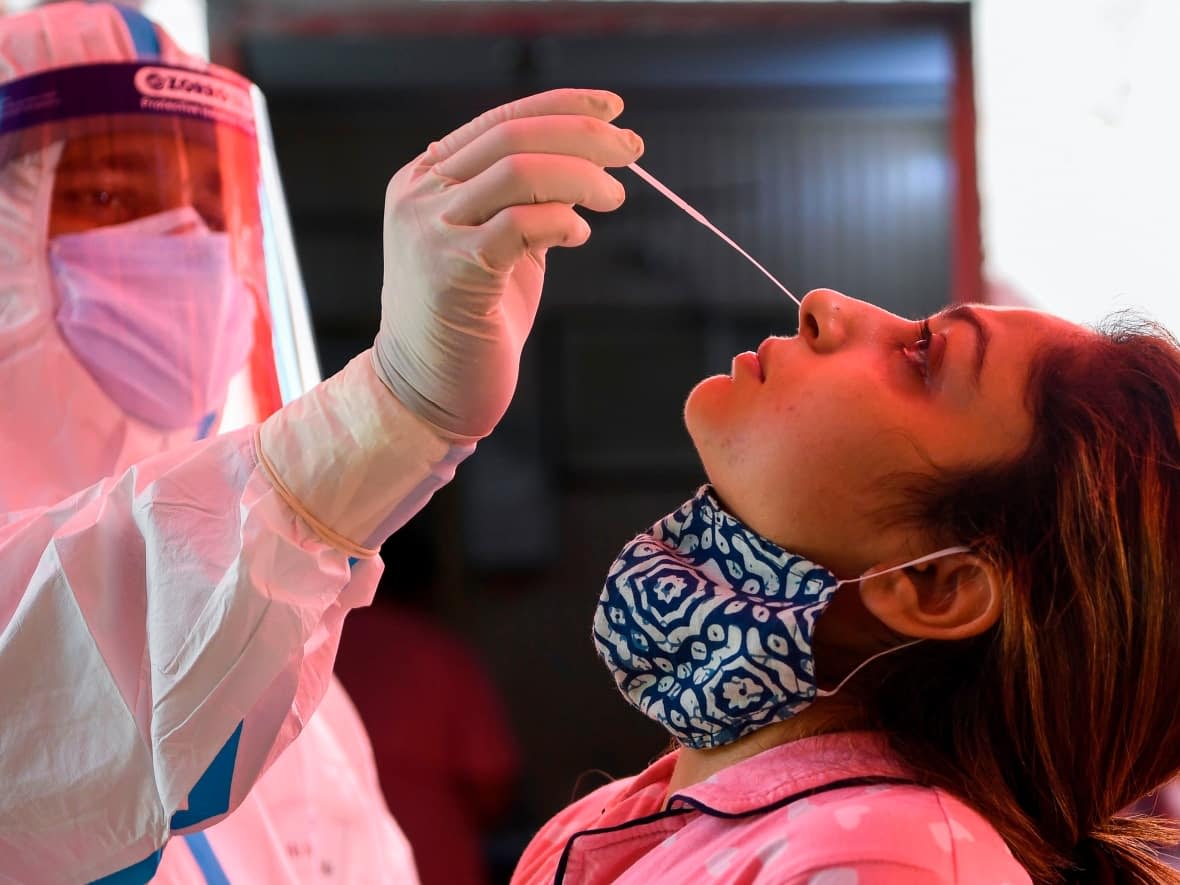Ontario's COVID-19 testing and isolation rules have changed: Here's what you need to know

The Ontario government is restricting who is eligible for PCR testing and shortening the required self-isolation period for fully vaccinated people infected with COVID-19.
Dr. Kieran Moore, Ontario's chief medical officer of health, announced updated guidelines at a media conference Thursday afternoon.
The new rules come as the Omicron variant of COVID-19 drives a surge in cases that is straining public health resources. The province has set successive records for daily COVID-19 cases in the past week, with the latest — 13,807 new infections — reported Thursday morning.
"As cases continue to rise at a rapid rate and evidence on the Omicron variant evolves, our response needs to evolve alongside other jurisdictions to ensure those living and working in our highest-risk settings are protected," Moore said.
Here is what you need to know about the new guidelines.
COVID-19 testing
Starting Dec. 31, the province is limiting eligibility for publicly funded PCR tests to high-risk individuals who are symptomatic or who are at risk of severe illness from COVID-19. This includes hospital patients and staff, people who live, work or provide care at long-term care or other congregate settings, and people from or who work in Indigenous communities.
The province says members of the public with symptoms of COVID-19 who don't meet the new eligibility criteria should assume they are infected and follow the new self-isolation guidelines (see section below).
In addition, most people who test positive on a rapid antigen test will no longer be required to confirm their diagnosis with a PCR test or a molecular test.
While previously anyone with symptoms of COVID-19 could get a PCR test at an assessment centre, Moore said the province's public health system simply doesn't have the capacity to test everyone amid the surge in cases.
"We must preserve these resources for those who need them the most," Moore said. "This updated eligibility will ensure that those at highest risk of severe outcomes and those caring for them have timely access to test results."
Elementary and secondary students and staff who are symptomatic are eligible for PCR tests if they receive a self-collection kit through their schools.
Asymptomatic testing will also be discontinued, except in the case of outbreaks or high-risk settings.
Moore said there is a shortage of rapid testing kits in Ontario. The remaining tests are being saved for people in high risk settings so that they can "test-to-work."
Those members of the public who do have rapid tests shouldn't use them to "socialize," he said. Instead, they should save them to determine whether their symptoms are from the virus.
WATCH | CBC's The National: Could Omicron be a turning point for the pandemic?
Self-isolation guidelines
Vaccinated people and children under the age of 12 who are sick with COVID-19 will only be required to self-isolate for a minimum of five days following the date when their symptoms started, instead of 10. Their household contacts will also be required to isolate alongside them.
If, after five days, their symptoms have improved for at least 24 hours they can end the isolation period.
Close contacts of people with COVID-19 who are fully vaccinated, asymptomatic and who don't live with the positive case, won't have to self-isolate at all. Instead, they're being advised to self-monitor for symptoms and to not visit any high-risk settings or vulnerable individuals for 10 days.
Moore said this change is based on growing evidence that generally healthy people with COVID-19 are most infectious for the two days before and three days after symptoms develop.
People who are unvaccinated, partially vaccinated or immunocompromised will still be required to isolate for 10 days.
Health-care workers with symptoms, including those who work in long-term care homes, must stay away from work for 10 days, although they can return after isolating for seven days if they test negative on a PCR test or two rapid tests, taken on day six and seven of their isolation period.
For the full list of people who qualify for PCR testing, and for the most recent self-isolation guidelines, visit the Ontario government website.


